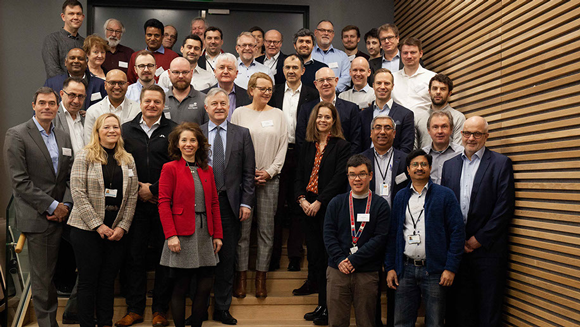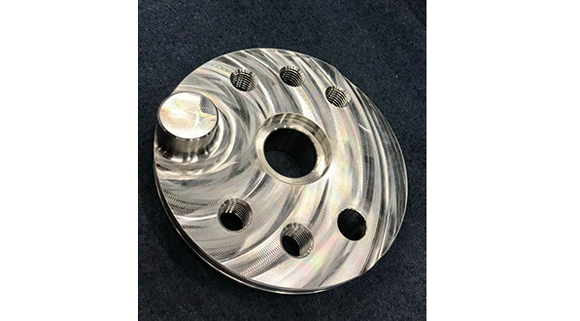Successful closure of projects for qualification of Additive Manufacturing in the oil & gas and maritime industries
March 16, 2020

Two Joint Innovation Projects (JIPs) on the qualification of Additive Manufacturing in the oil & gas and maritime industries have drawn to a close. The aligned JIPs, which featured a total of twenty partners, aimed to develop guidelines for the qualification of metal spare parts and components produced by Laser Powder Bed Fusion (LPBF) and Wire Arc Additive Manufacturing (WAAM) for oil & gas and maritime, and an accompanying economic model.
The partners in the JIPs, representing the complete value chain, were Equinor, BP, Total, Shell, Kongsberg, Aidro, OCAS/Guaranteed (a spin-off from Arcelor Mittal), Ivaldi Group, TechnipFMC, Siemens, Voestalpine, Vallourec, SLM Solutions, Additive Industries, Quintus Technologies, HIPtec, IMI CCI, the Advanced Forming Research Centre of the University of Strathclyde, Immensa Lab and Sandvik AB.
During the course of the programmes, the partners collaborated to produce:
- A guideline towards certified parts, managed by DNV-GL. The final guideline provides a framework to ensure that metal spare parts and components, produced via Wire Arc Additive Manufacturing (WAAM) and Laser Powder Bed Fusion (LPBF), meet specifications. This means that the parts meet the stated quality requirements for the industry and are manufactured in a safe and repeatable manner.
- A ‘Toolbox’ for part selection, supply chain set-up and economic viability, managed by Berenschot.

Real parts were produced as case studies to ensure the development of a high-quality guideline which marries with realistic manufacturing practices. The production of these parts reportedly enabled the consortium to assess all activities that need to be monitored and qualified to ensure a complete guideline.
Among the case studies was a crank disk, produced by L-PBF at Aidro for Kongsberg. The original, conventionally manufactured part, has a lead time of 8–10 weeks, while the additively manufactured part required less than one week to be printed in Inconel 718, using an EOS M290 machine.
Other case studies produced using L-PBF included:
- An Equinor impeller in Inconel 625
- The same impeller in Ti-6Al-4V
- A Kongsberg propeller blade in titanium
Parts produced using WAAM:
- A Vallourec circulating head in X90 low-alloy construction steel
- A BP cross-over in Inconel wire, in two versions: limited scale and full scale
- A Kongsberg crank pin in S700 low-alloyed wire
- A Technip FMC/Total-designed crossover, in F22 alloy steel
By producing real world parts as case studies, it was possible to assess the variations between traditional manufacturing processes and the Additive Manufacturing process. These variations were found along the entire value chain, not only in the discrete production phase.
The guideline produced through the course of the JIPs offers a quality assurance methodology the selected Additive Manufacturing processes and parts, divided into three categories depending on the consequences of failure: AM Class 1 (AMC 1) for non-critical components, AM Class 2 (AMC 2) for less critical components and AM Class 3 (AMC 3) for critical components.
Depending on the AM Class, different assurance steps are involved based on the AM technology used, such as build process qualification testing, production testing and part qualification testing:
- All parts should be manufactured using a qualified build process. A build process is qualified through a defined Build Process Qualification Testing (BPQT) procedure. The purpose of the BPQT is to prove and provide a baseline so that, when using a certain set of essential parameters, a certain quality is achieved
- Production testing is intended as a control to ensure that the manufacturing process produces parts according to the qualified build process not just once, but also on, for example, the second, tenth or twentieth build. The extent of production testing and type of tests carried out are different for the different AM technologies
- Depending on the criticality of the part to be manufactured, the part itself or a representative geometry may need to be tested, due to the unique geometric capabilities of AM. The methodology and extent of part qualification testing depends on both AM Class and AM technology.
At the close of the two JIPs, DNV GL launched two new projects to continue the investigation of AM technologies and develop a Digital Warehouse programme. The members of the new JIPs are: Additive Industries, AFRC of the University of Strathclyde, Aidro Hydraulics & 3D Printing, BP, Equinor, HIPtec, IMI CCI, Immensa Lab, Ivaldi Group, Kongsberg, OCAS / Guaranteed (spin-off from Arcelor Mittal), Quintus Technologies, Sandvik, Shell, Siemens, SLM Solutions, TechnipFMC, Total, Vallourec and Voestalpine.
















